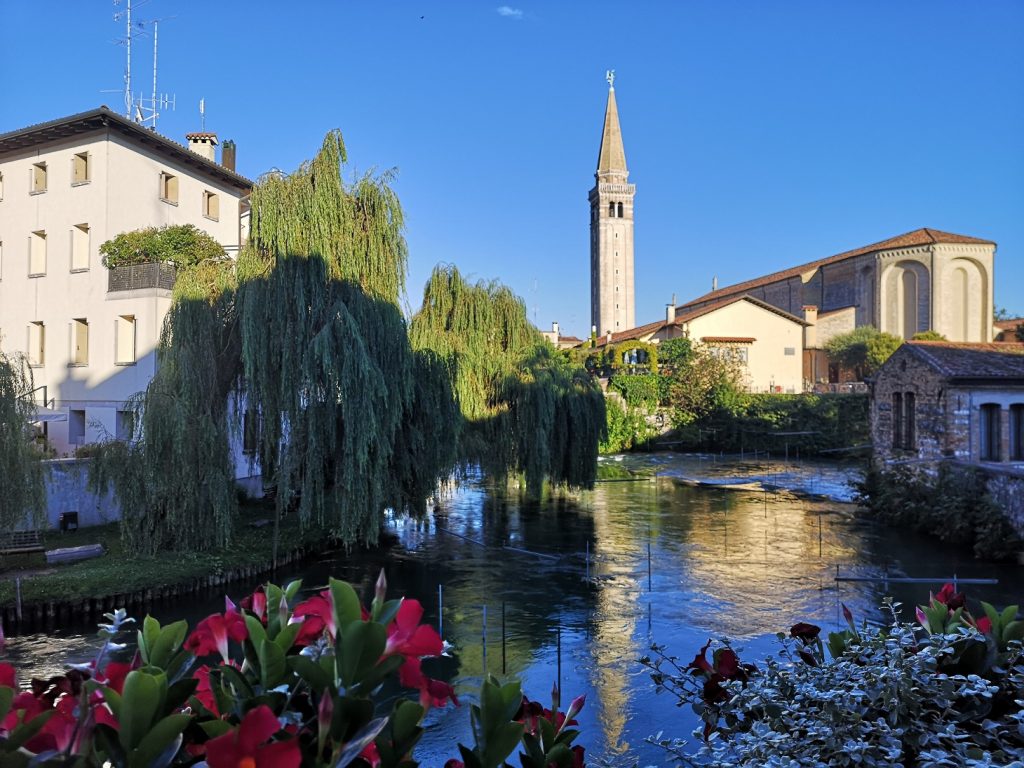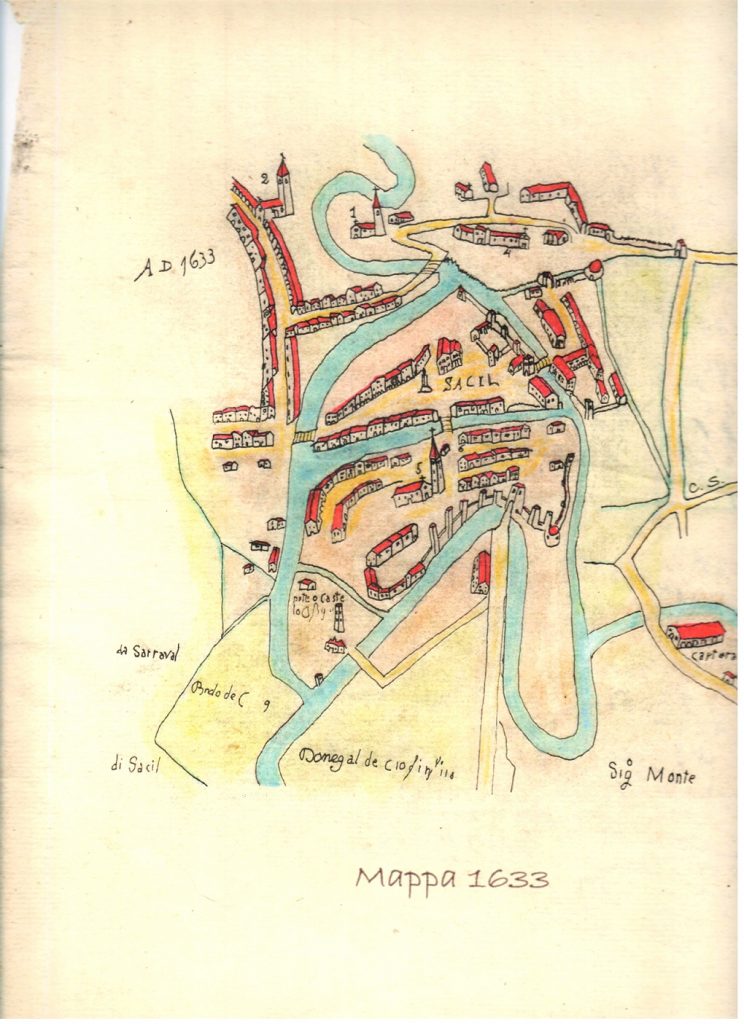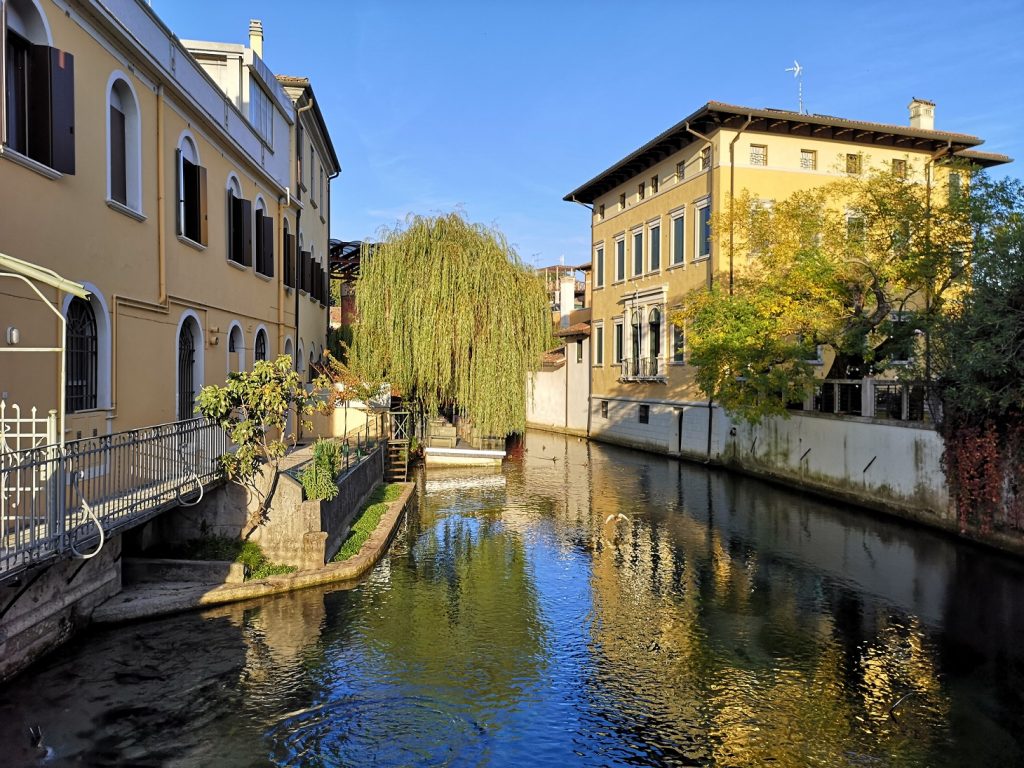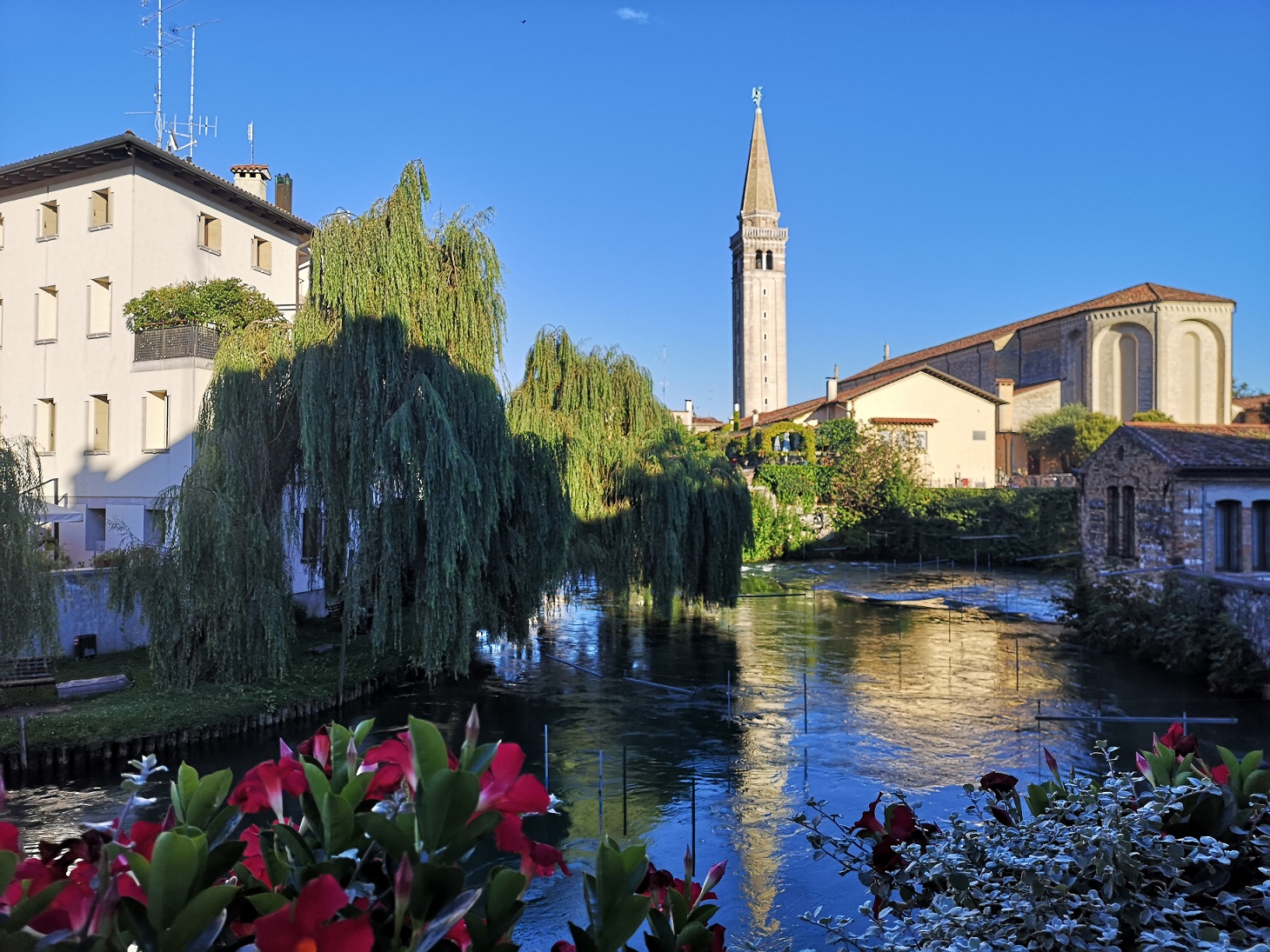Sacile is a city of water without being close to the sea. Because the water, that of the resurgences of the Livenza river, here it is widespread almost everywhere. The river rises not far from the sources of Gorgazzo, Santissima, Molinetto, at the foot of the nearby plateau of Cansiglio and Monte Cavallo. Countless aquifer veins run silently and invisibly for miles, hidden underground. Then they emerge giving life to the Livenza which expresses itself as a real river in the town of Sacile, in Friuli Venezia Giulia.

Here, curiosity within curiosity, the Livenza opens in two arms behind the local town hall and then meets south of the historic center. In between, a canal and two islands connected to each other by bridges and footbridges. The first island, with its own Piazza del Popolo, houses the center of civil and administrative life of Sacile. The second, with the Piazza Duomo, is home to the most strictly religious sites. And it is also the one with the oldest history.
The waters of the Livenza reflect the suggestive profiles of the town
The beautiful Sacile is full of evocative and somewhat fairytale-like landscapes, “drawn” by the river which, with its clear and calm waters, bathes the branches of the willows. A small, rare and precious jewel that draws its beauty from the river and reflects the profiles of its buildings on the river's waters. A garden city, full of greenery and many historical testimonies.

We are right on the border line between the provinces of Pordenone and di Treviso, on the border line between Friuli Venezia Giulia and Veneto. THE first settlements in this area date back to 796 after Christ. This is testified by the remains of an ancient church built at the time by Henry, Duke of Friuli. On these remains and on this site the current cathedral was then built, dedicated to San Nicolò, which dates back to the end of the fifteenth century and which was built on the structure of the previous church.
The pact with Venice and the centuries of prosperity
In those years, we are talking about the first settlement in the period before and after the year XNUMX, a small village in a strategic position had been built. Because here there was already a Roman road used also by the Lombards. And because here was the river. Rivers have always been fundamental waterways in the history of peoples. Already in medieval times, the Livenza was sailed up to the Venice lagoon.

For Sacile, also called the gateway to Friuli, this border position was fundamental. In 1190 Sacile had the opportunity to adopt its own statutes, becoming the first city in Friuli that was autonomous from an administrative point of view. In 1420 he agreed with the Serenissima Republic of Venice an annexation pact to form a common front against the Turkish danger. And this alliance was in the following centuries a reason for peace and great economic development.
Palazzo Ragazzoni, the most important historical-artistic attraction
The Venetian nobles also built their country houses in these parts. Sacile is still full of palaces in the middle Venetian style with double entrances, one from the street and one from the river. This is why these buildings, which in some examples are also strongly influenced by the Treviso style, normally have a double facade. The building that best represents the wealth of the sixteenth century in Sacile and the strong bond that the town had with Serene it is certainly Ragazzoni Palace, the most important attraction from a historical-artistic point of view. The palace, overlooking the river just outside the ancient walled enclosure, once the restrictions imposed by the pandemic are over, it will be open and can be visited. It was built by the Venetian Giacomo Ragazzoni, who had moved to Sacile for his commercial interests and land properties.

Illustrious merchant, official supplier of raisins - of which he had a monopoly - for the English royal house, he was the editor, among other things, of the marriage contract between Queen Maria Tudor and Philip II of Spain. Assiduous in many European royal courts, in his palace in Sacile he hosted, among others, Henry III of Valois, son of Caterina De Medici. These acquaintances led to the creation of a precious cycle of frescoes, inside the palace, which depict the Ragazzoni brothers, Giacomo and Placido, with the kings of the time: Maria Tudor, Philip II of Spain, Henry III of France, Maria d ' Austria, the Doge Sebastiano Venier and the Grand Vizier of Constantinople.
The excellences of the present: Fazioli Pianoforti and Tenuta Vistorta
Sacile today is confirmed as a land of excellence. It is located in Sacile la Fazioli, one of the most prestigious Italian entrepreneurial realities for the production of grand and concert pianos. Among the most important brands in the world. And here is also the Tenuta Vistorta, a winery located in the enchanting thirteenth-century village of the same name. Owned by the Brandolini Rota family then d'Adda, the main villa is surrounded by an extraordinary park redesigned in the XNUMXs by the English landscape architect Russel Page. The park, included in the circuit of the Great Italian Gardens, can be visited as well as the barn and the historic cellar. Tenuta Vistorta produces wines of great value in this land which is the cradle of reds. The company stands out for the care and protection of centenary vines of Merlot di Vistorta and for the creation of new organic vineyards.

Tourist destination of quality and great charm, Sacile is a captivating combination of land and water. From the Middle Ages to the present, along the placid resurgence waters of the Livenza river, which here has been a spectator of over a millennium of history.
(photo credit tourism office visitsacile.it)





